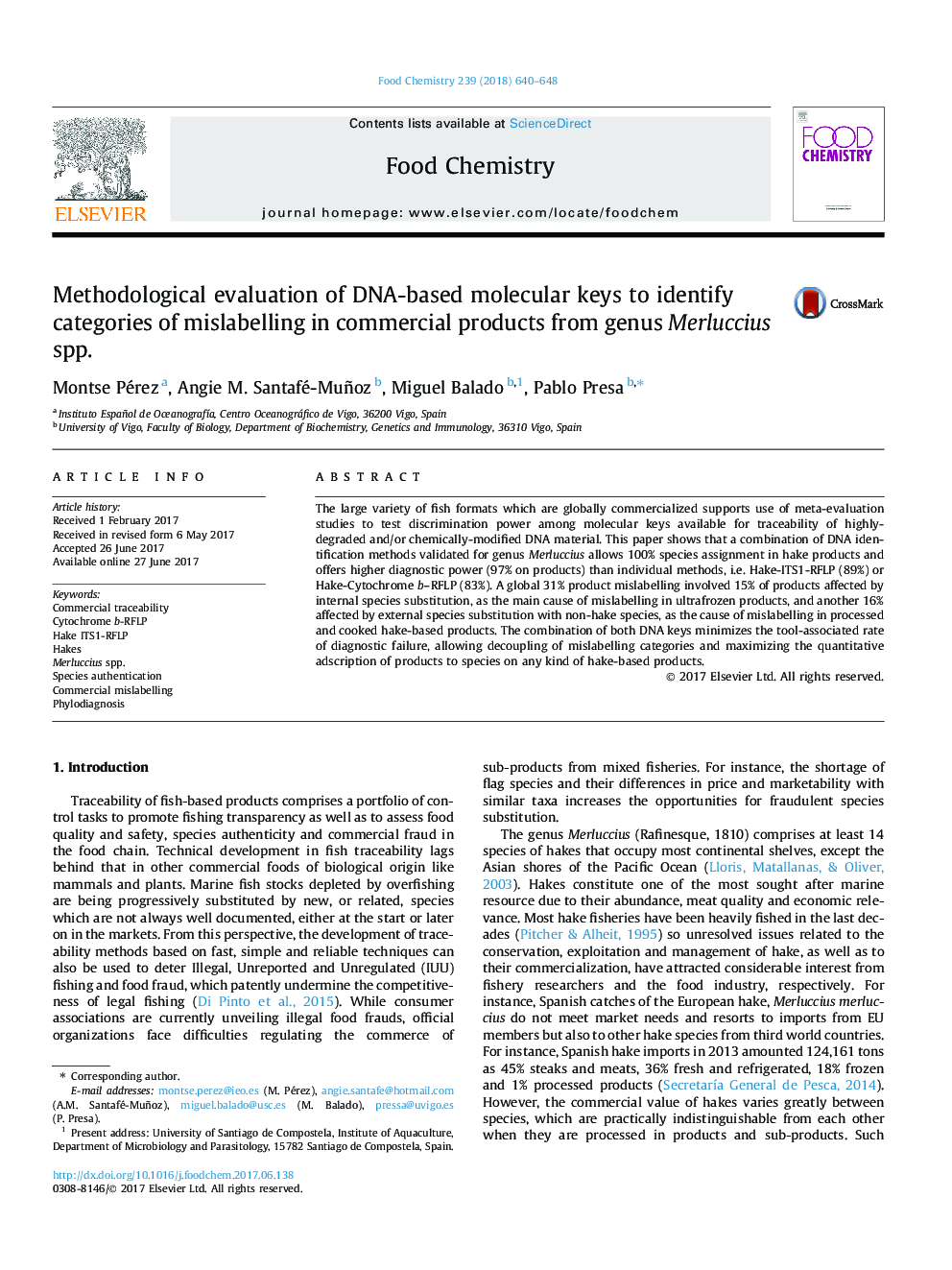| Article ID | Journal | Published Year | Pages | File Type |
|---|---|---|---|---|
| 5133008 | Food Chemistry | 2018 | 9 Pages |
â¢Combinatory of DNA-based keys increased diagnostic power on hake subproducts to 97%.â¢Phylodiagnostic assignment of hake products to species reached 100% efficiency.â¢A 31% mislabelling of hake-based products was observed in northern Iberia markets.â¢A 15% mislabelling by congeneric substitution affected 60% of ultrafrozen products.â¢A 16% mislabelling by external substitution affected 40% of deeply cooked products.
The large variety of fish formats which are globally commercialized supports use of meta-evaluation studies to test discrimination power among molecular keys available for traceability of highly-degraded and/or chemically-modified DNA material. This paper shows that a combination of DNA identification methods validated for genus Merluccius allows 100% species assignment in hake products and offers higher diagnostic power (97% on products) than individual methods, i.e. Hake-ITS1-RFLP (89%) or Hake-Cytochrome b-RFLP (83%). A global 31% product mislabelling involved 15% of products affected by internal species substitution, as the main cause of mislabelling in ultrafrozen products, and another 16% affected by external species substitution with non-hake species, as the cause of mislabelling in processed and cooked hake-based products. The combination of both DNA keys minimizes the tool-associated rate of diagnostic failure, allowing decoupling of mislabelling categories and maximizing the quantitative adscription of products to species on any kind of hake-based products.
